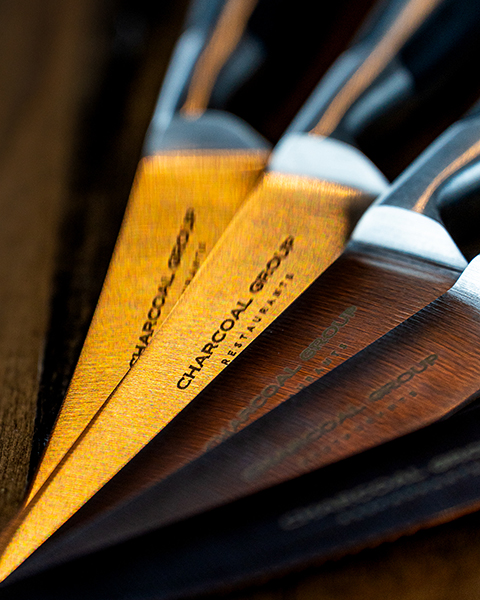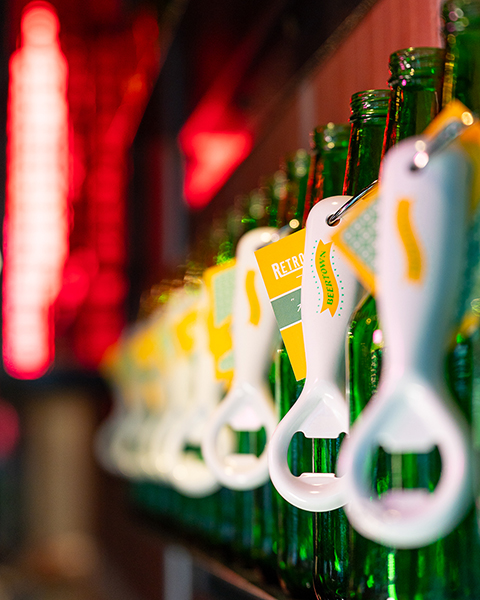Focusing on Recovery
During recuperation from a medical incident, Andy Wright rediscovers the joy of close-up photography with the Tamron 70-180mm F2.8 telephoto zoom.
Share the article:
More Photo Tips | Video Gallery | Photo Gallery | Enewsletter sign-up
By Jenn Gidman
Images by Andy Wright
Two decades ago, Andy Wright started taking pictures as a way to decompress from a stressful corporate lifestyle. “I was traveling back and forth to China, which I did for two-plus years,” the photographer from Ontario, who uses they/them pronouns, says. “The pressure was heavy. I picked up a point-and-shoot camera and began wandering the streets of China in my downtime.” Andy created an online portfolio from their photos, which led to a job with a wedding photographer—which in turn led to a full-time career taking pictures.
After suffering a heart attack earlier this year, Andy received a Tamron lens they won in a competition: the 70-180mm F/2.8 Di III VXD telephoto zoom lens for their Sony mirrorless camera (see the new G2 version here). “When photography becomes your job, it can be easy to forget about the fun, playful side of it,” Andy says. “This lens reinfused me with a love of photography while I was recuperating, especially with my more artsy close-up work. My images are so sharp, and I love the falloff I can achieve when shooting wide open. The lens sits comfortably in my hand, and it’s so lightweight that I sometimes forget my camera is there when it’s hanging from a holster on my waist.”

70-180mm (180mm), F5.6, 1/250 sec., ISO 200
Click image to view larger
With the Tamron 70-180mm F2.8 lens, Andy Wright is able to achieve their particular style of close-up art: moody photos with Rembrandt-style lighting. “You should never dismiss the lighting you encounter,” they say. “With my expertise in close-up photography, I can walk into the darkest spaces and find some kind of light that I can harness, even if it’s some LEDs in the corner, someone’s cellphone screen, or an old bulb dangling from a wire. Sometimes you just have to shift your position a bit to find the sweet spot, like I did here with the steak knife set I shot for the Charcoal Group of Restaurants for their Christmas promo. I had to move a bit until the light from the ceiling lights fell on the knives just the way I wanted, offering that beautiful pop of gold on those two blades. The Tamron 70-180mm F2.8 lens has reinvigorated my creativity, as well as my work ethic.”

70-180mm (180mm), F2.8, 1/320 sec., ISO 1000
Click image to view larger
ANDY’S QUICK TIPS
Stay open to subject matter.
Sometimes I’ve headed out with a certain subject in mind and nothing ever comes of it. Other times, photo opportunities seem to fall into my lap. My most interesting photos often emerge out of those more spontaneous moments, and I’ve learned to embrace the “broken.” I’m a big believer in the Japanese concept of wabi-sabi, which means seizing on the beauty of imperfection.
With close-up photography, this also means you have to be open to your surroundings at all times. When I first came out of the hospital, I could barely walk, so I spent a lot of time in a nearby park. One day, I spotted these beautiful red leaves outside my studio, backlit by the sun. It wasn’t an intended shot, but once I saw it, I knew I had to take a picture. By blurring out the background, I was also able to tell more of a story. I wanted the viewer to see that flow of red all around and ask: What’s behind this branch? Where exactly is the photographer, surrounded by this sea of red?

70-180mm (180mm), F5, 1/250 sec., ISO 100
Click image to view larger
Be flexible with composition.
I don’t want to simply present my viewers with a snapshot in time—I want to take them on a journey. That means employing the Tamron 70-180mm F2.8 lens to experiment with selective focus and an intentional use of bokeh. I’m always interested in boiling the image down to the smallest focal point possible and then dancing with that. In the photo of the beer bottles with their openers, that involved working my way down the line until I found exactly the portion of the photo that I wanted to be in focus, allowing the rest to drop off gently into the foreground and background.

70-180mm (70mm), F3.5, 1/250 sec., ISO 400
Click image to view larger
Seek out the details around you.
One of the very first photos I took with the Tamron 70-180mm F2.8 lens was of the pinecone you see here. I got down as low to the ground as I could, dropped my aperture to F2.8 to separate the pinecone from the background, and started shooting taking close-up photography shots. I’ve always maintained that even the most mundane places in your own neighborhood are replete with possibilities (I actually teach that in a workshop). I realized early in my recovery that while I was barely able to walk anywhere and had limited mobility, I was still able to use this awesome, lightweight, sharp lens with a powerful zoom to reach into places and spaces that I couldn’t easily step into. That revelation opened up so many layers for me, in both my photography and my recovery. It’s been sublime to have a tool like the Tamron 70-180mm lens to offer me this renewed burst of energy when it comes to my photography.

70-180mm (180mm), F2.8, 1/1000 sec., ISO 100
Click image to view larger
To see more of Andy Wright’s work, check out his website and Instagram.
Is your Tamron News subscription up to date? Click to subscribe to all editions of Tamron News featuring how-to tips, new product news, contest announcements and inspiration!
More Photo Tips | Watch Videos | Learn More About Tamron Lenses | Photo Gallery
